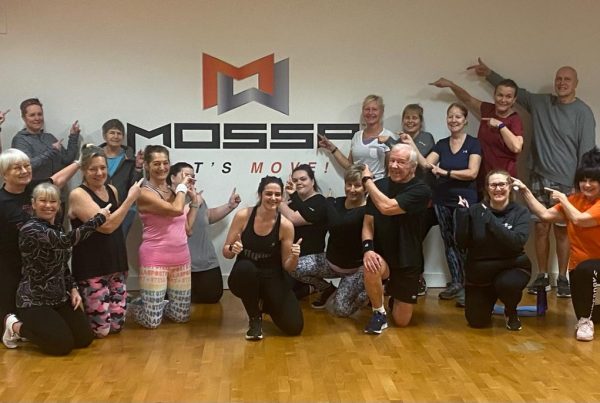Coping with pregnancy in summer
When you train pregnant women, you will always take precautions to prevent overheating no matter what the season. During summer, extra awareness of these precautions is needed to keep your pregnant clients exercising safely and to maintain their energy levels.
Many women report feeling the effects of heat more during summer. Pregnancy is more tiring, with increased energy demands required for growing a baby or babies together with the increased blood volume of up to 50% being circulated around the body.
Blood plasma volume begins to increase in the first trimester. It has the steepest rate of increase in the second trimester and peaks late in the third trimester.1 Resting metabolic rate also increases during pregnancy, as a result of increased body mass, pregnancy-associated physiological changes (i.e., cardiac output) and the growing foetus.2
Tips to help your clients to continue exercising safely during summer include:
- choosing the cooler times of the day when exercising outdoors
- positioning pregnant clients near the air conditioning or fan
- encouraging regular fluid intake before, during and after training
- wearing loose and comfortable or breathable clothing to exercise in
- avoiding exercise if feeling unwell.
As you train and talk to your pregnant clients, there are a number of tips you can provide for those who need more advice on coping with summer. Let’s discuss some of these below.
Keeping your clients cool
Sam Kirker, a personal trainer who works in Queensland, Australia, who has pregnant women attending her studio during summer, uses a water spritzer to help cool her clients, along with cooling towels or even a wet cloth that can be kept in zip-lock bags in the fridge or freezer for during/after the session.
Checking hydration levels
Increasing water and fluid intake from drinks that contain nutrients is recommended to maintain hydration levels for pregnant women, especially during summer. Drinks can include juice, coconut water, teas and milk. One way for women to check is their urine colour. Urine can look more concentrated and yellow in the morning but, during the day, it should be clearer. Advise women to check after exercise that their urine is still clear, to ensure they have had adequate fluid intake during and after their training.
Maintaining energy levels
Encouraging your clients to have rest breaks during the day or when they return home from work can help to maintain energy levels.
Keeping cool in order to sleep may require using fan at night and having a water bottle nearby to take sips from if a client wakes up. Using pillow support between both the thighs and lower legs helps keep the body in alignment and reduces the amount of lower back or hip discomfort some pregnant women feel.
Reduce the effect of calf cramps
Calf cramps at night can disturb sleep and cause more fatigue, so you can provide your clients with tips for reducing the effect of cramps, such as maintaining hydration and the nutritional requirement levels of calcium, potassium and magnesium. Coconut water has a good amount of potassium so, while hydrating, it also helps to balance magnesium and sodium.
Calf stretches can be done regularly to reduce tension in the calf muscles, which are ‘working harder’ during pregnancy due to the changing posture and increasing weight of the uterus. As pregnancy progresses, the inwards curve or arch in the lower back increases and the pelvis anteriorly rotates. This in turn can affect how much the calf muscles are working and they may need to be stretched more intentionally during training programmes. Encourage your client to stretch after they go for a walk, swim or cycle and before bed if they get calf cramps at night.
Managing swelling in the feet and ankles
At the end of the day or when resting, encourage supporting the legs so the feet are elevated to reduce the effect of blood pooling in the legs. Foot and ankle movements like pumps and circles promote venous return so, when standing or sitting for any length of time, encourage clients to move their feet and ankles.
For women who have access to a swimming pool or beach, walking in the water or swimming can help to alleviate the effect of swelling in the legs, feet and ankles due to the effect of the hydrostatic pressure.
Pregnant clients may need to modify their training programmes according to their energy levels, listening to their body each day. For some, extra stretches may be needed one day. For others, modifying their load or intensity levels to match their energy levels may be needed if summer weather has been hotter. Continue with regular pregnancy precautions and, for further information on these, refer to the ACOG guidelines.
References
- Aguree S, Gernand AD (2019), Plasma volume expansion across healthy pregnancy: a systematic review and meta-analysis of longitudinal studies, BMC Pregnancy Childbirth, 19: doi: https://doi.org/10.1186/s12884-019-2619-6, accessed on 6 July 2021.
- Most J, Dervis S, Haman F, Adamo K, Redman L (2019), Energy intake requirements in pregnancy, Nutrients, 11(8): 1,812. doi: 3390/nu11081812, accessed on 6 July 2021.
Further reading
- Seven health benefits of coconut water: https://www.medicalnewstoday.com/articles/318394, accessed on 6 July 2021.
- ACOG guidelines: https://www.acog.org/clinical/clinical-guidance/committee-opinion/articles/2020/04/physical-activity-and-exercise-during-pregnancy-and-the-postpartum-period, accessed on 6 July 2021.
Where to next?…. How about listening to a podcast with Dianne on ‘Pregnancy Priorities’?
Check out Dianne’s courses Third Trimester Training for Labour, Ante Natal Core Training, 100 Steps to Plank: Building Abdominal Strength for Every Female Client (Part 1), 100 Steps to Plank: Building Abdominal Strength for Every Female Client (Part 2) and Early Post Natal Training








